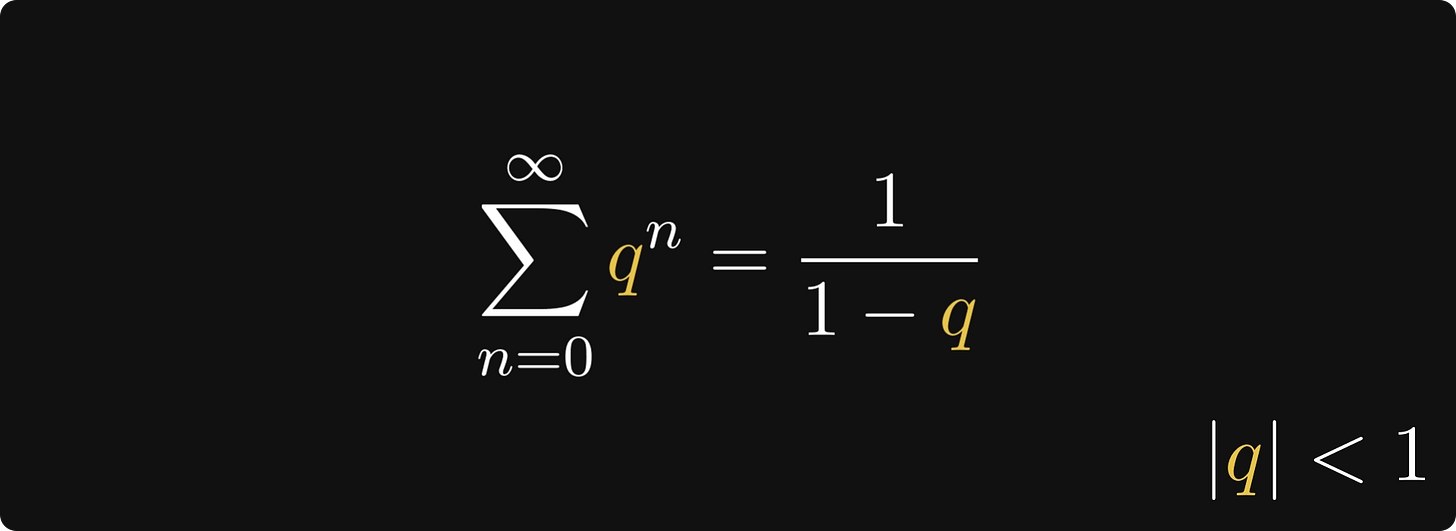Epsilons, no. 1: The geometric series
(One of) the building blocks of mathematics
(I am launching a new series called “Epsilons”, where I explain a single concept or tool in 500 words or less. In mathematics, the greek epsilon (ε) denotes an infinitesimal quantity. Thus, what ε is for mathematicians is what a bit is for computer scientists.)
One of my favorite formulas is the closed-form of the geometric series.
I am amazed by its ubiquity: whether we are solving basic problems or pushing the boundaries of science, the geometric series often makes a surprising appearance.
Here is how to derive it from first principles.
Let’s start with the basics: like any other series, the geometric series is the limit of its partial sums.
Keep reading with a 7-day free trial
Subscribe to The Palindrome to keep reading this post and get 7 days of free access to the full post archives.


